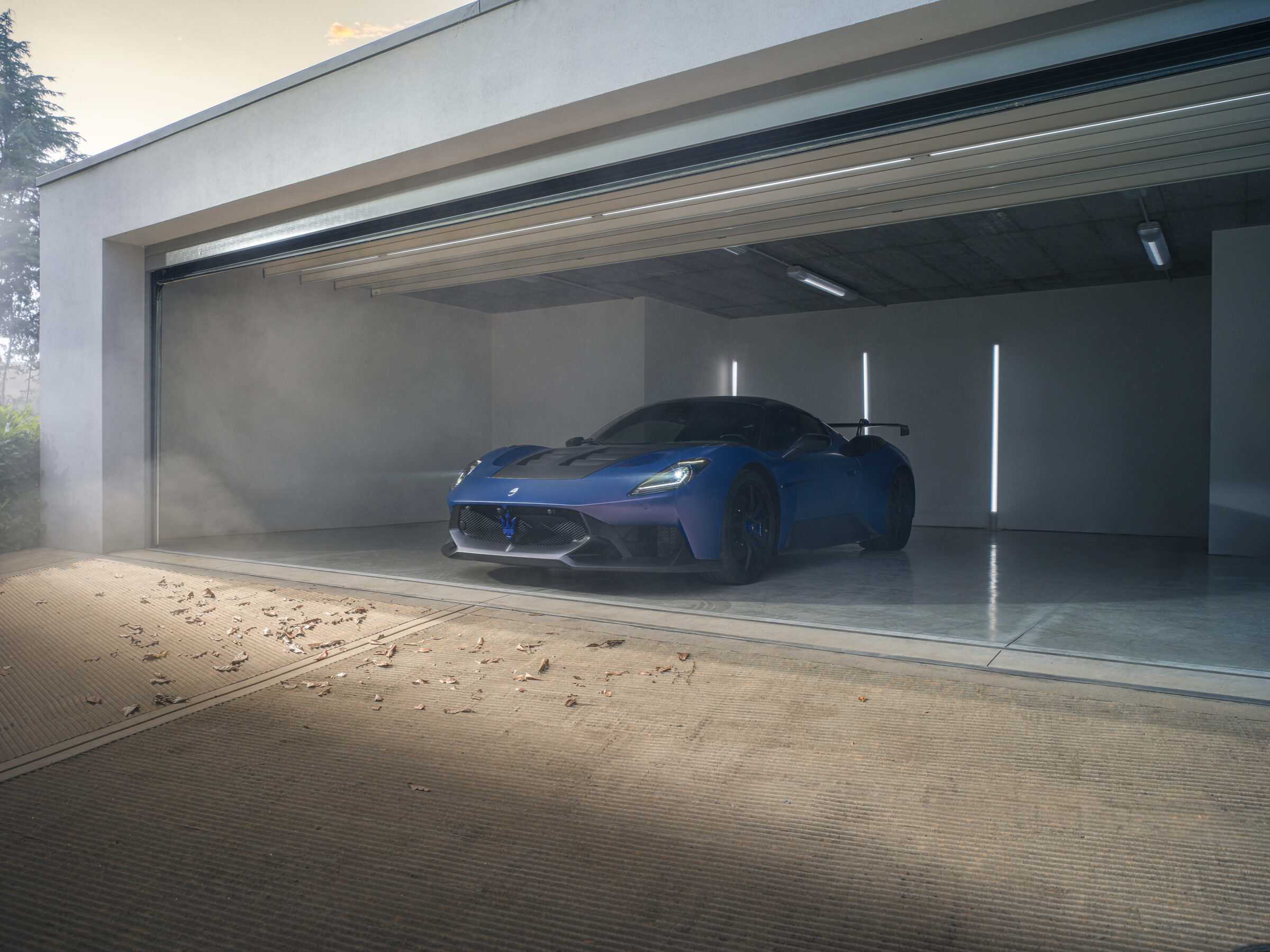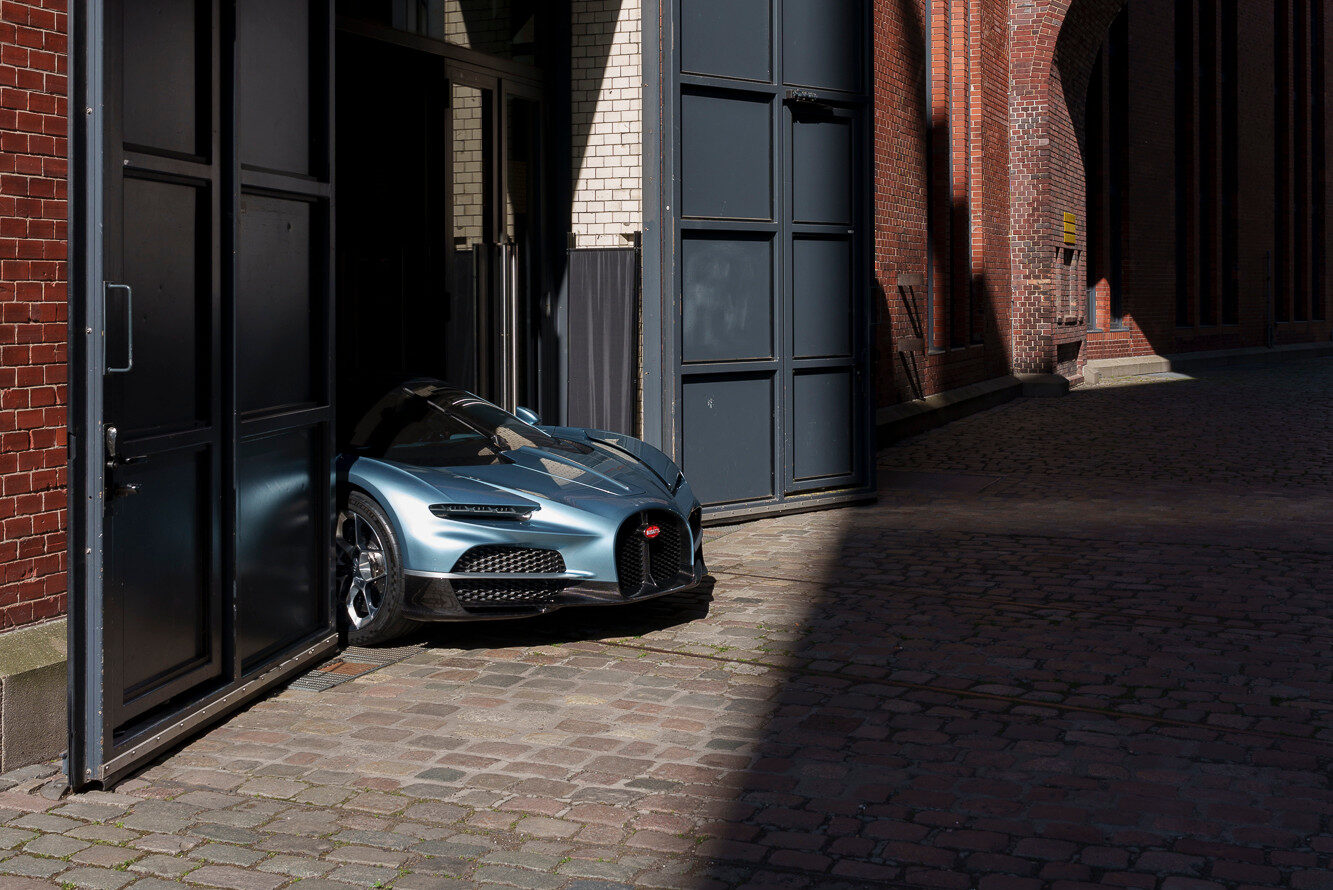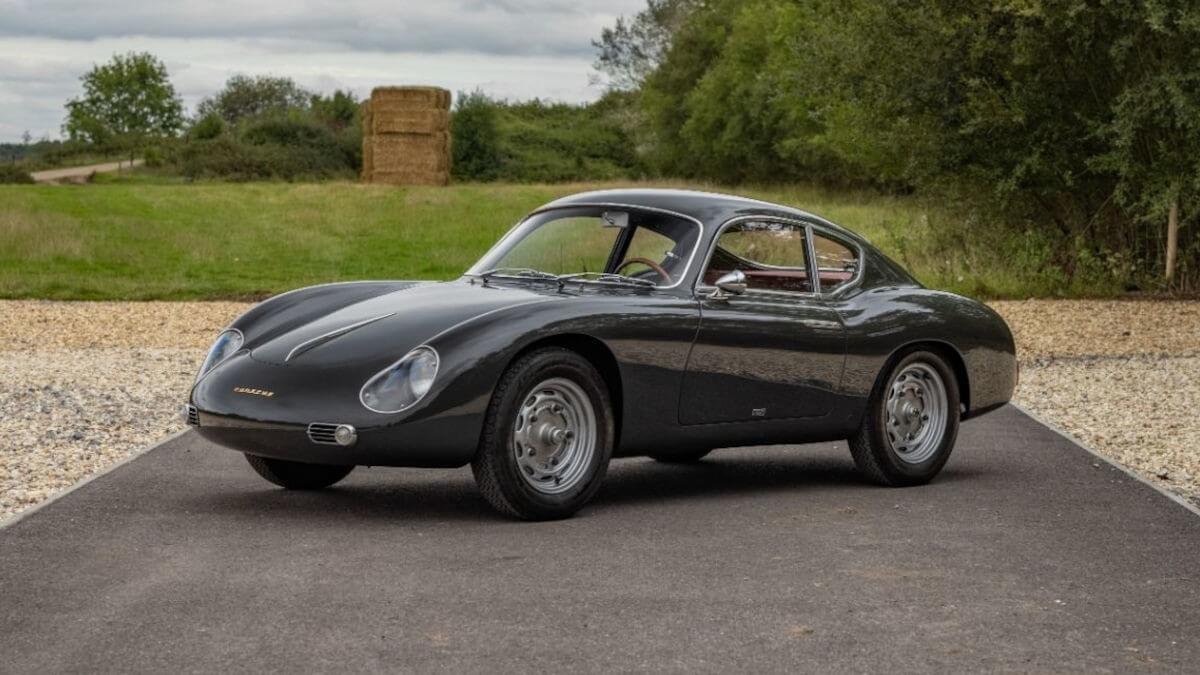BMW M8 (E31)
The facelift of the current BMW M8 recently made its debut at the Amelia Island Concours d’Elegance. Many car fans know that there was already a BMW 8 Series from the end of the 1980s. Less well known, however, is that an M8 was also developed on this basis. For various reasons, this remained a one-off and never went into series production. BMW even concealed the existence of the only prototype built for a long time. It wasn’t until 2010 that the car, which had meanwhile matured into a classic, was presented to the public for the first time. Until then, there had only been a few prototype photos and various rumors about the project. From today’s perspective, it is a pity that the M8 was never allowed to roll into the dealer showrooms. It would have lifted the car brand from Munich to a new level. In fact, this prototype may be called a worthy Ferrari opponent. The reason for this statement is hidden under the bonnet, which has no pop-up headlights compared to the normal 8 Series.
At least 550 hp
Instead, the lights are located where the fog lights are on the standard 8 Series. In the center of the bonnet is an air outlet. Underneath is the internally S70 named V12 naturally aspirated engine. Fans also know this engine from the 850 CSi presented in 1992, where it produced 280 kW/380 hp from 5.6 liters of displacement. As a further development, the S70/2 with 6.1 liters of displacement, this twelve-cylinder engine found its way into the McLaren F1. The M8 prototype also has a displacement of just over six liters. The resulting power output is reported to vary between 550 and 640 hp. Even with the smaller number of horsepower, the M8 would have occupied a serious position in the competitive environment in the early 1990s. In combination with the manual six-speed gearbox, experts estimate the possible topspeed at 320 kph (199 mph) – but the speedometer only goes up to 300 kph (186 mph). In order to achieve more torsional rigidity, the body was given fixed B-pillars in deviation from the normal 8 Series.
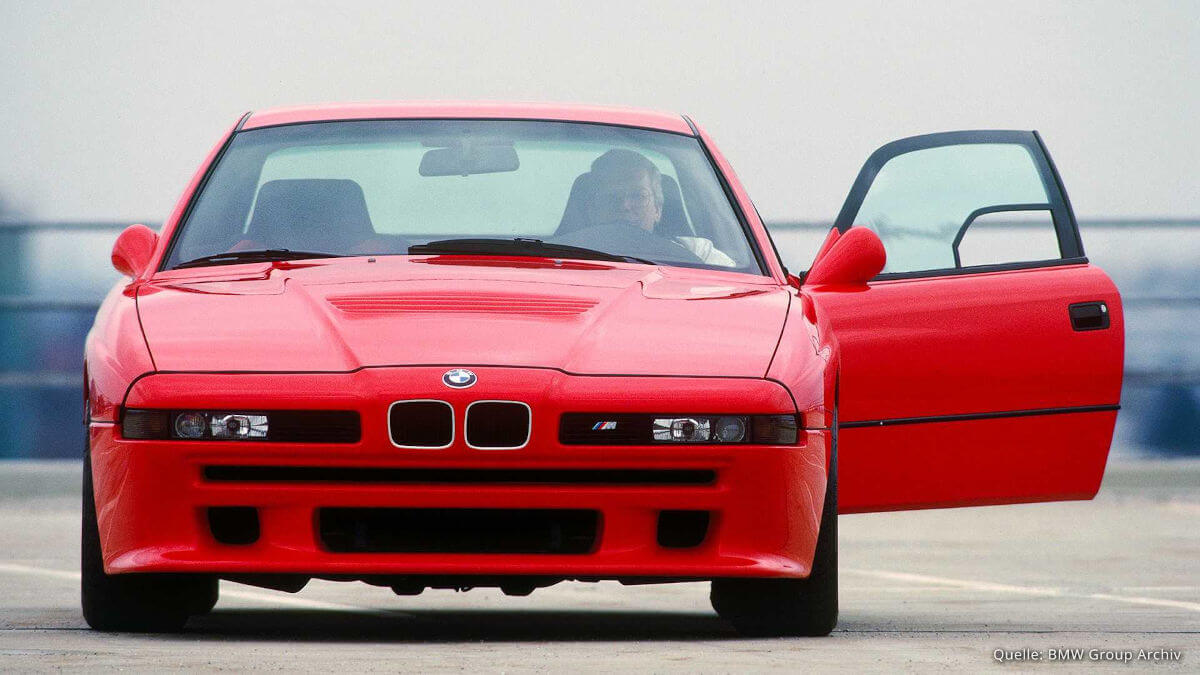

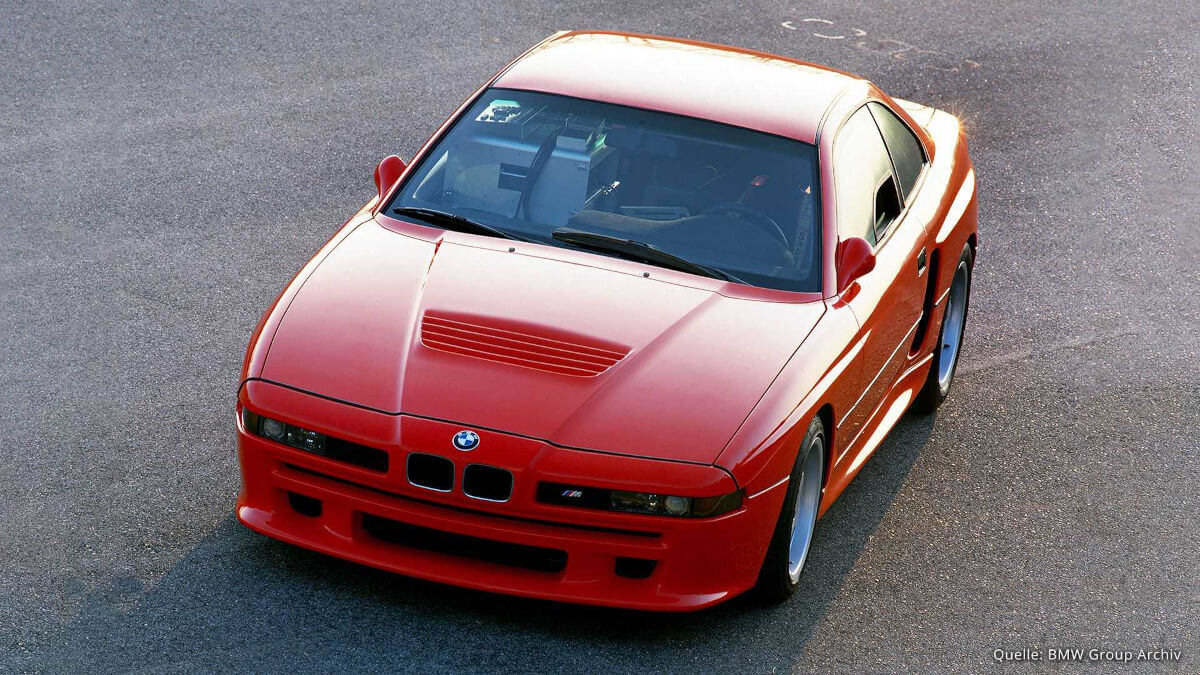

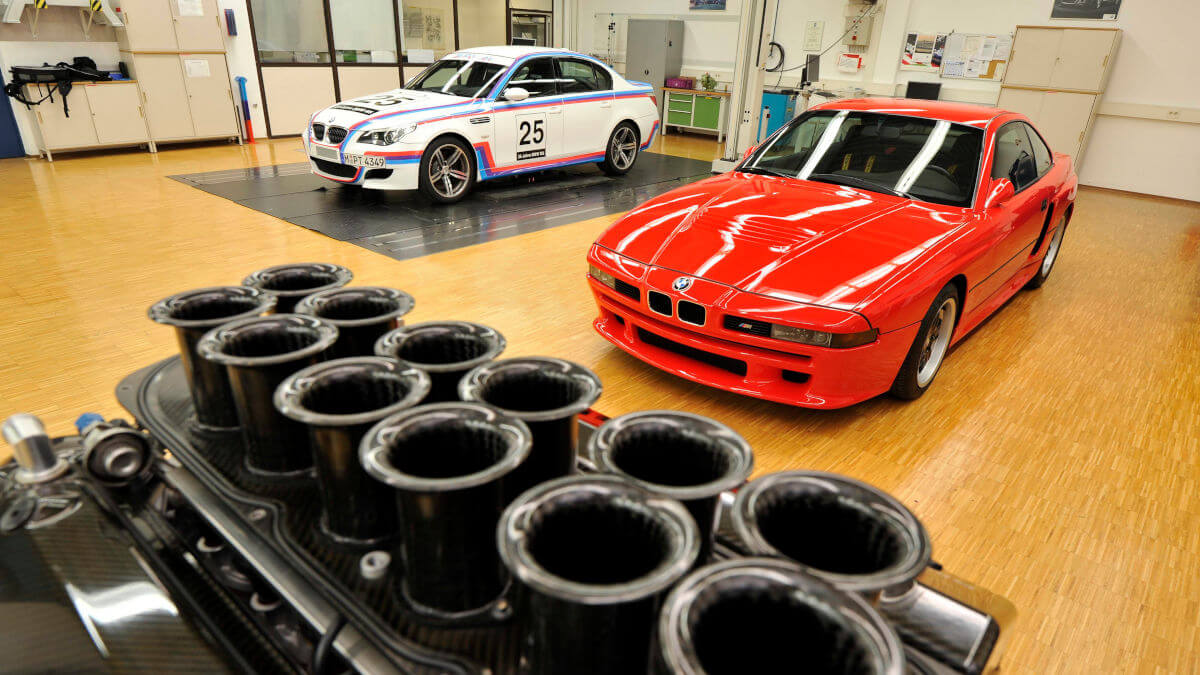

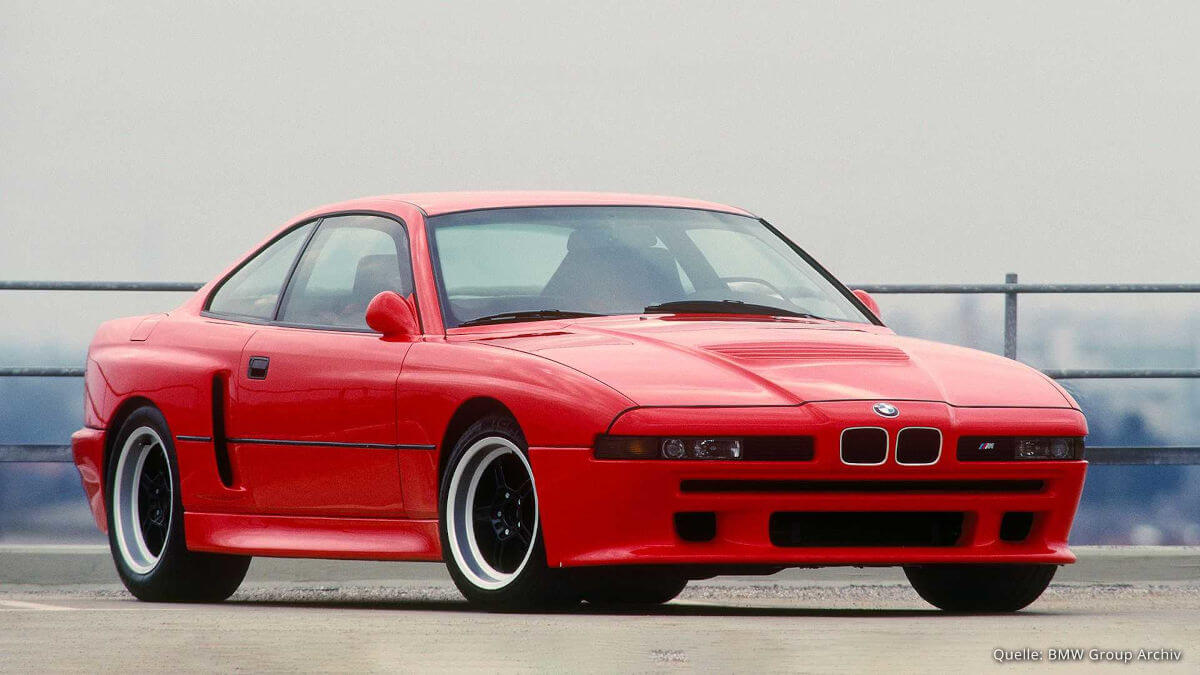

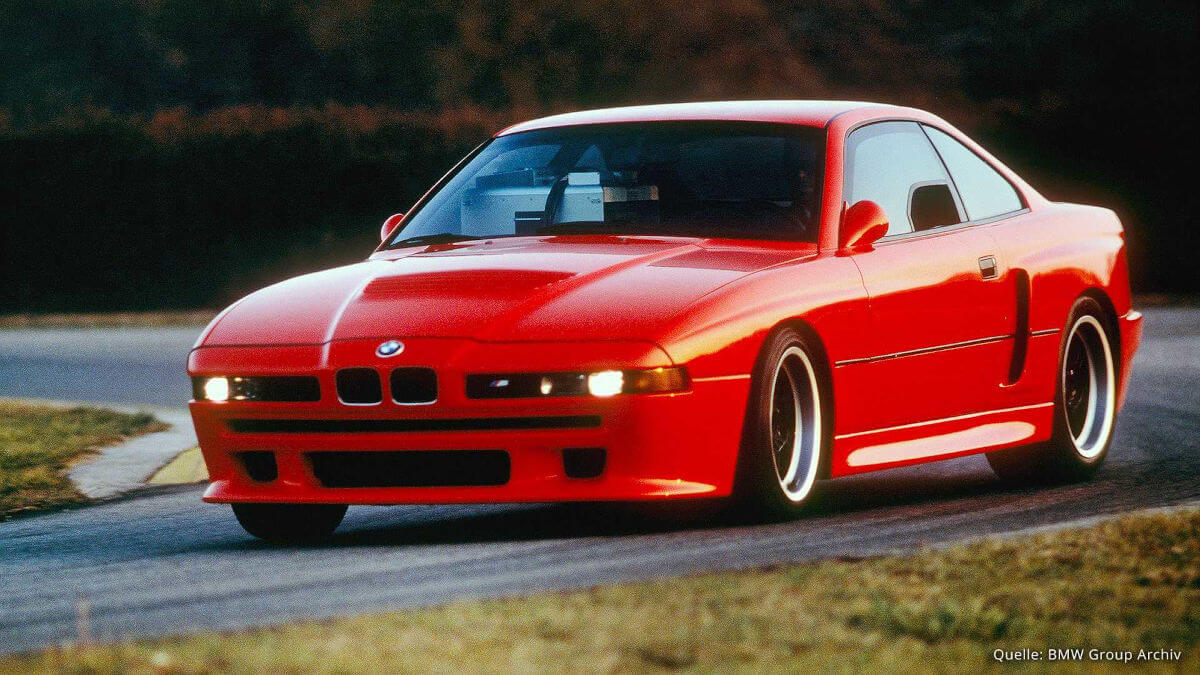

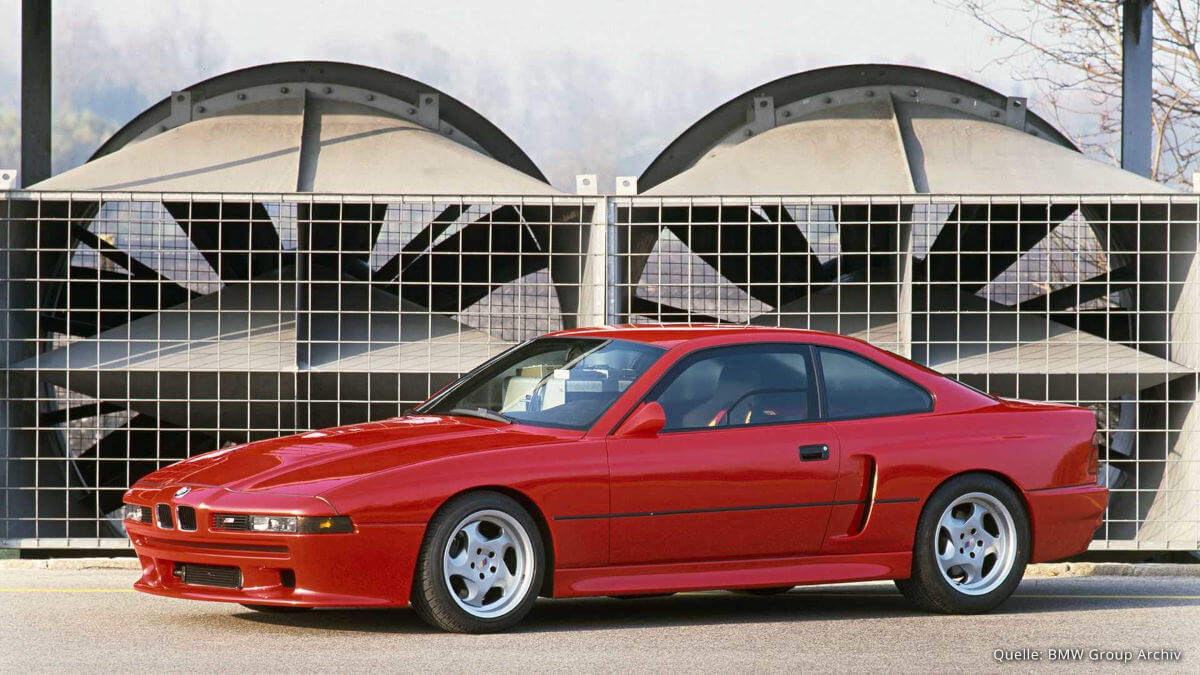

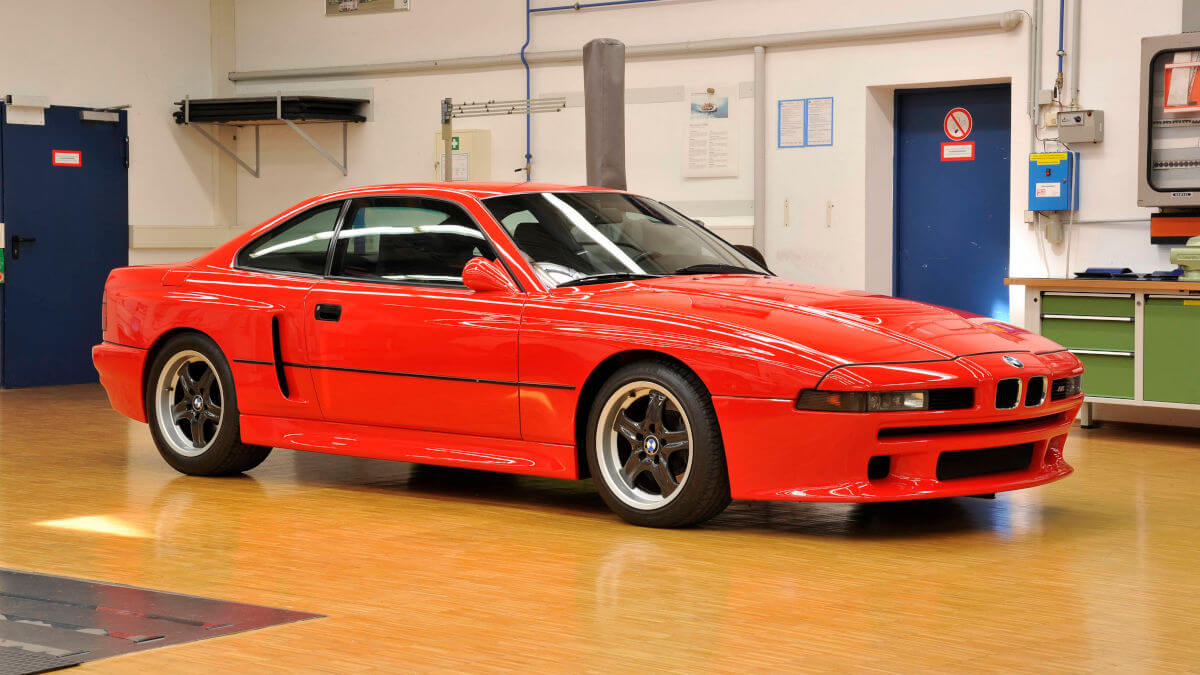

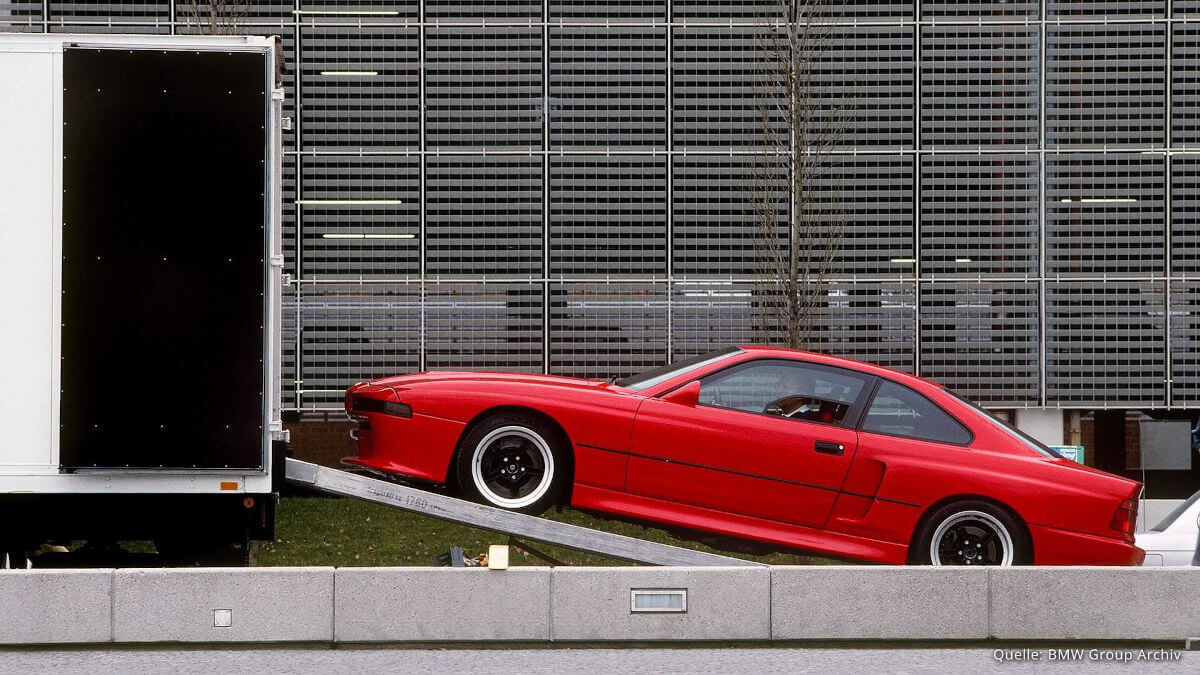

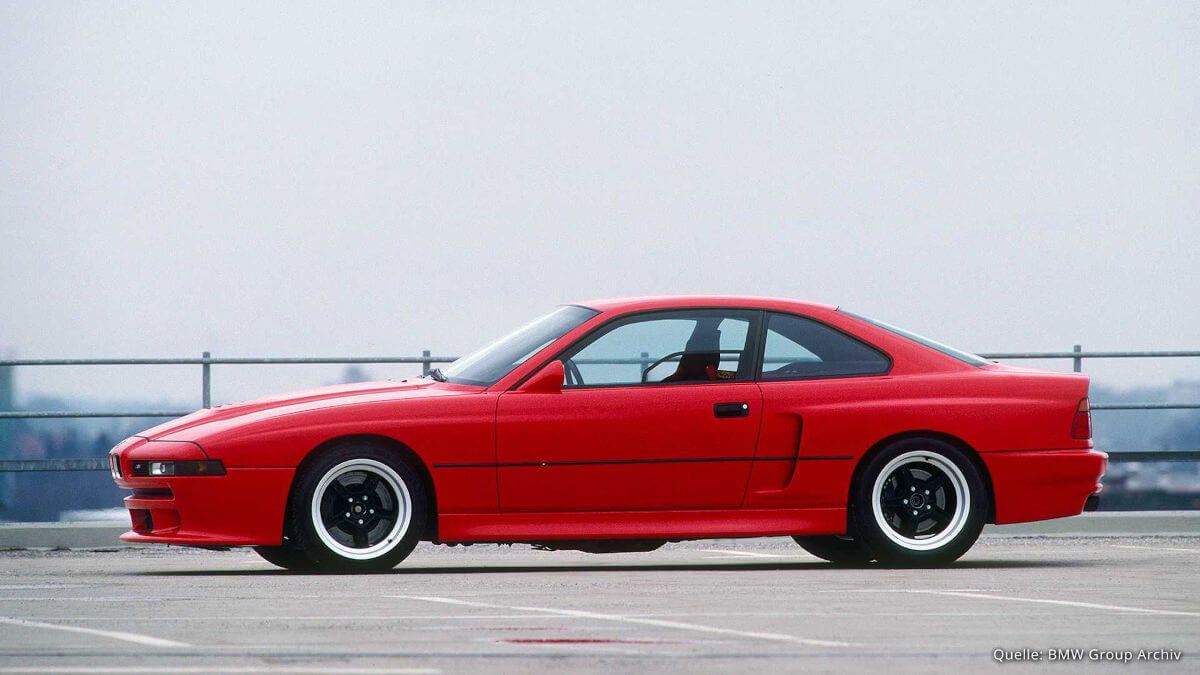

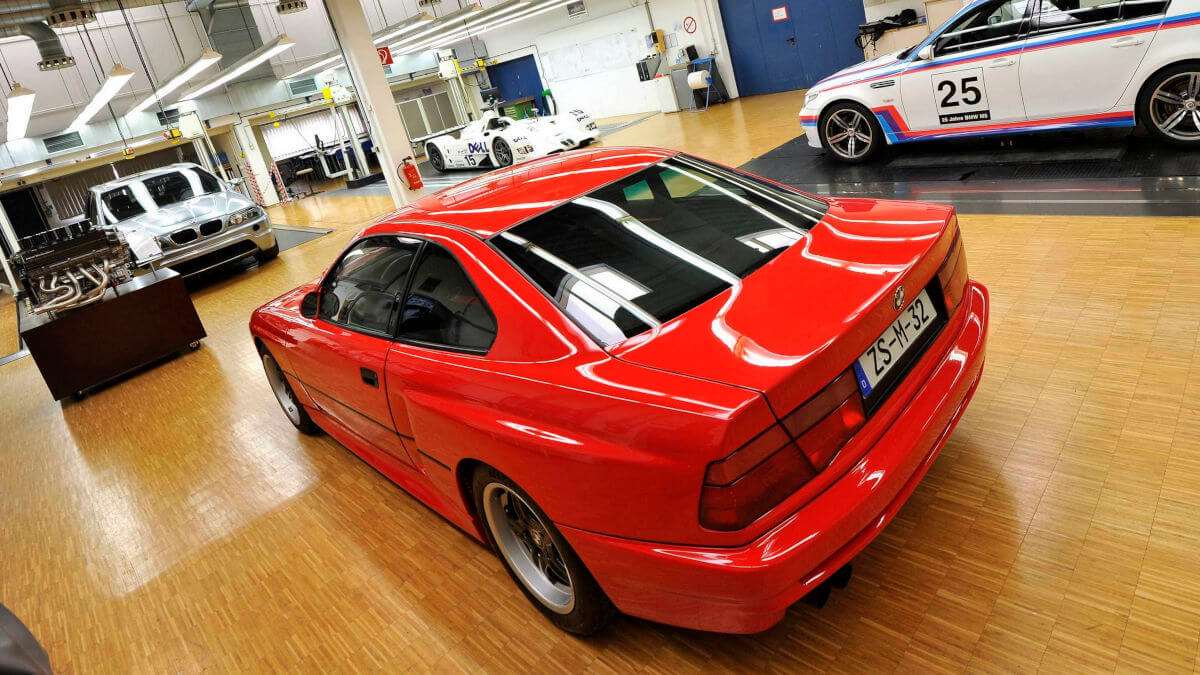

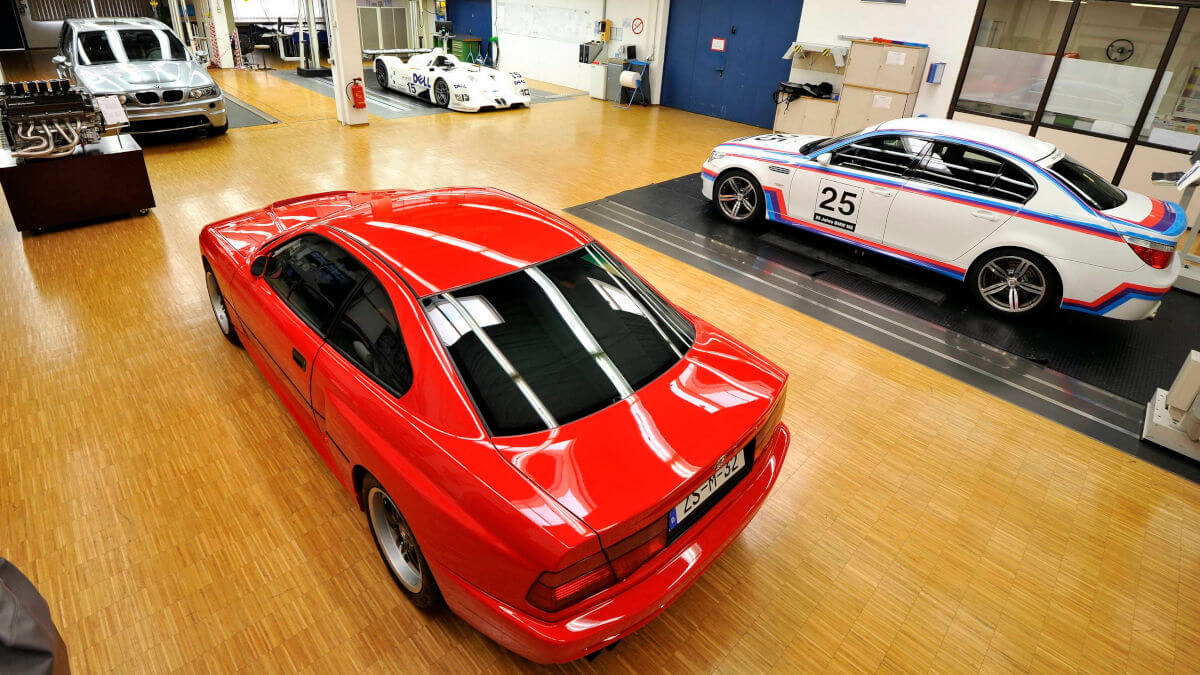

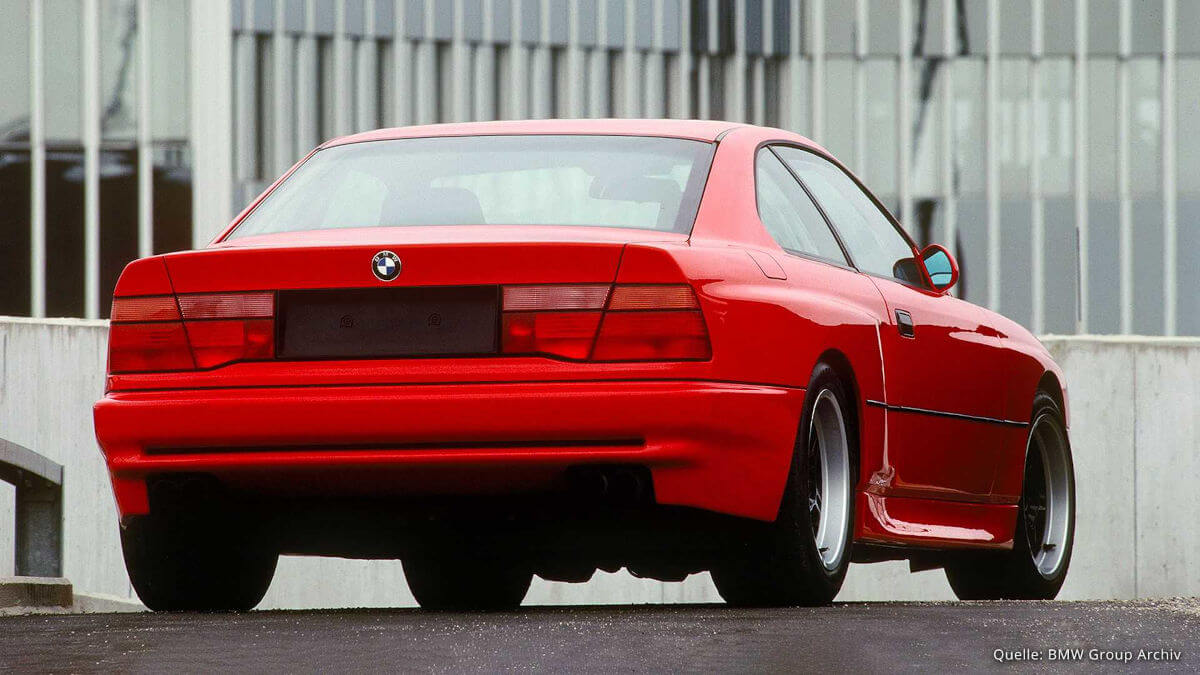

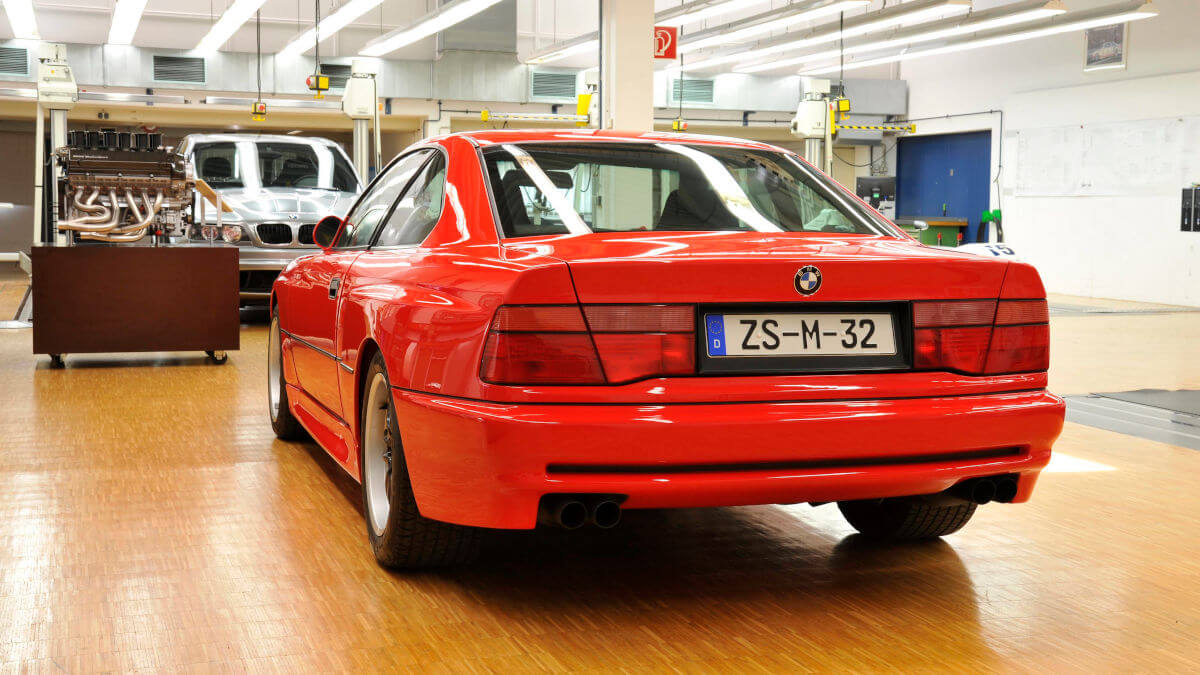

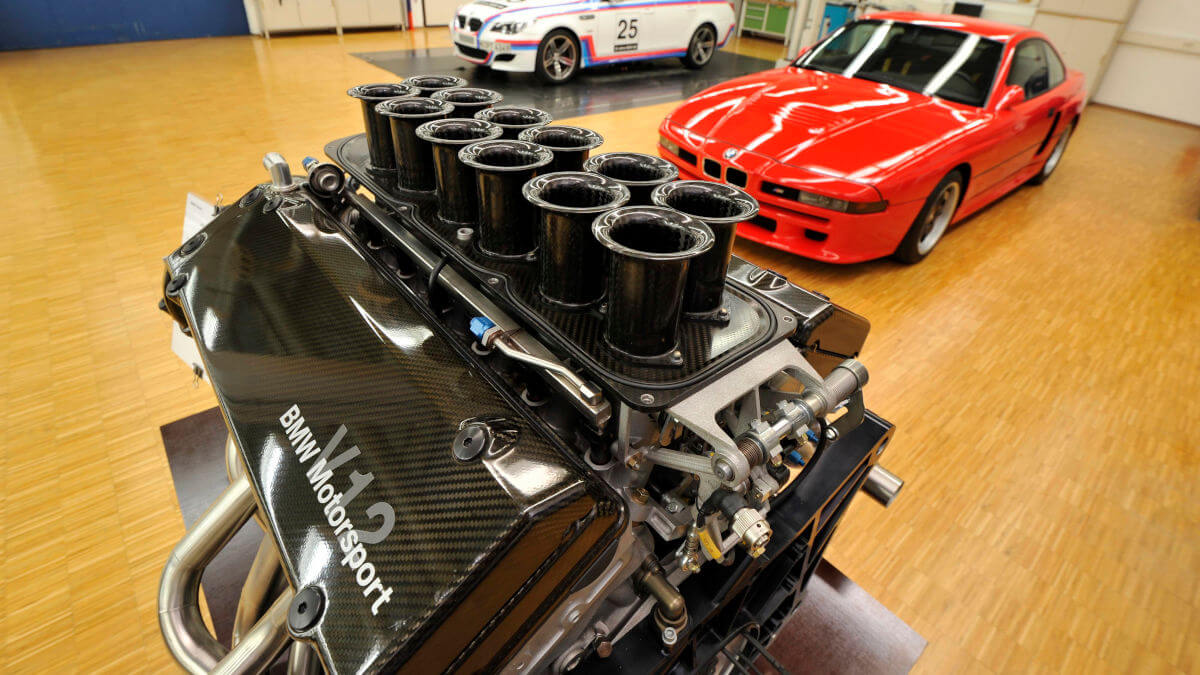

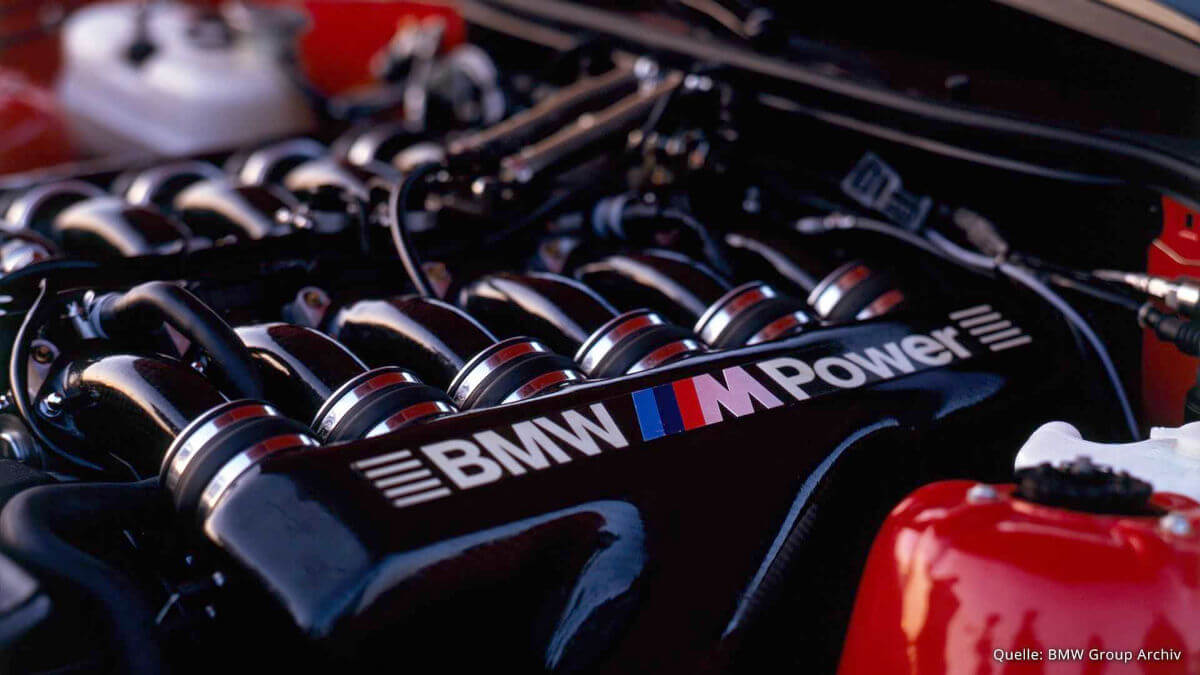

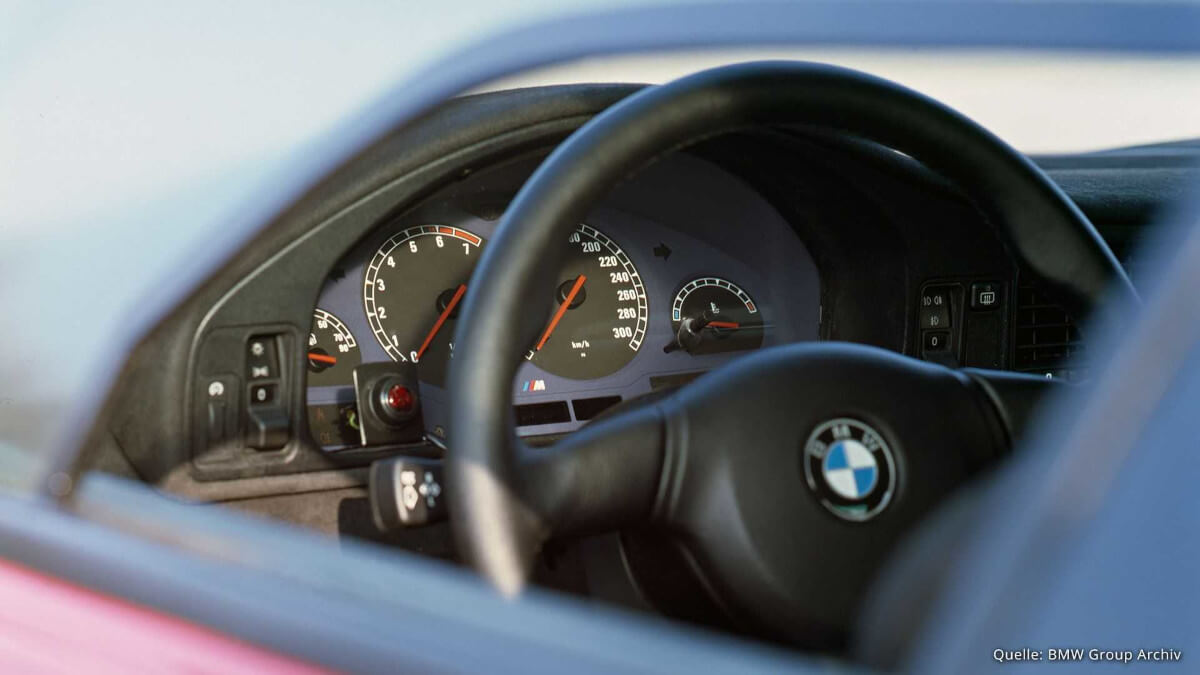

Side air intakes
In addition to pure performance, the unique prototype also impresses with its details. The entire intake manifold of the V12 engine, for example, is made of carbon fiber. Likewise, the spokes of the 17-inch alloy wheels are coated with carbon. Bonnet, tailgate and doors are made of fiberglass. To leave enough room for the engine, the engineers moved the coolers for the engine and differential oil to the rear. For this purpose, there are narrow air intakes in the side walls behind the doors. Inside, you quickly realise that the car was still far from any kind of series production. It is true that the large metal box on the passenger side, in which measuring equipment could be stored, was exchanged for a second bucket seat years ago. However, various buttons and switches on the dashboard were intended purely for testing on closed test tracks. The M8 prototype never received road approval. Before this could have happened, the project was stopped internally.
Hidden in storage for around 20 years
The exact reasons for this step haven’t been made public. It was probably a combination of many factors. On the one hand, the bodywork changes from the 850 CSi to the M8 were serious and would have required expensive new tools in production. Secondly, sales figures for the 8 Series fell short of expectations, making an expensive top model seem unnecessary. And last but not least, the M8 with 640 hp would have even eclipsed the McLaren F1, which, although not a BMW project, was still a flagship with its engine. So the M8 prototype spent around 20 years in the cellar of BMW M GmbH before it was finally allowed to roll in front of the camera lenses of some journalists. At the same time, a closer look was taken at the engine with roller valves instead of throttle bodies and two camshafts per cylinder bank. This engine was also used in the 1999 Le Mans winning car V12 LMR and in the X5 LM prototype.
Images: BMW


